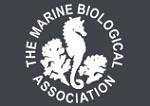APHOTOMARINE
An educational resource dedicated mainly to the photography
and diversity of marine life that can be found in coastal waters
and intertidal areas of Great Britain and Ireland by David Fenwick.

Dodecaceria concharum
- worm 1
Cirratulid worm
Dodecaceria concharum
- worm 2
Cirratulid worm
Dodecaceria concharum
- worm anterior 1
Cirratulid worm
Dodecaceria concharum
- worm anterior 2
Specimens found in galleries under Lithothamnion sheets on rocks and bedrock of the middleshore at Chimney Rocks, Penzance, Cornwall. 17.04.15.
Cirratulid worm
Dodecaceria concharum
- worm 3
Cirratulid worm
Dodecaceria concharum
- dorsal view head 1
Specimens found in galleries under Lithothamnion sheets on rocks and bedrock of the middleshore at Gyllyngvase, Falmouth, Cornwall. 06.12.14.
Cirratulid worm
Dodecaceria concharum
- chaetae 1
Cirratulid worm
Dodecaceria concharum
- chaetae 2
Cirratulid worm
Dodecaceria concharum
- chaetae 3
Cirratulid worm
Dodecaceria concharum
- ventral view head 1
Specimens found in galleries under Lithothamnion sheets on rocks and bedrock of the middleshore at Gyllyngvase, Falmouth, Cornwall. 18.06.15.
In natural light the species appears a very dark bottle green colour. A dark green cirratlid was discovered at Gyllyngvase in 1846 by Dr. W.P. Cocks. More recently Dodecaceria concharum has ben recorded by Roger Bamber close-by at Castle Beach, Falmouth. Confusion surrounds the identity of Dodecaceria species in the UK, it has been suggested to leave as Dodecaceria sp. for purpose of recording.
Cirratulid worm
Dodecaceria concharum
- anterior dorsal view 1
Cirratulid worm
Dodecaceria concharum
- anterior ventral view 1
Cirratulid worm
Dodecaceria concharum
- lateral view without tentacles
showing nuchal gland 1
Cirratulid worm
Dodecaceria concharum
- dorsal view without tentacles
showing nuchal glands 1
Cirratulid worm
Dodecaceria concharum
- in barnacles 1
Cirratulid worm
Dodecaceria concharum
- in barnacles 2
Specimens above found in old Perforate barnacles found on the side of a pontoon at Mylor Marina, Mylor Churchtown, near Penryn, Cornwall. 12.10.15.
APHOTOMARINE supports open source data recording and sharing for the benefit of wildlife, recorders, research, science and education. The project recommends the following websites and works with the following bodies and organisations.
The Marine Biological Association or MBA, based in Plymouth, is one of the world’s longest-running societies dedicated to promoting research into our oceans and the life they support. Since 1884 the MBA has been providing a unified, clear, independent voice on behalf of the marine biological community.It has a growing membership in over 40 countries.
The National Biodiversity Network or NBN is a charity that supports open source data sharing and recording supporting conservation, science and education. "Why do recorders need open source?". Simply because it supports the core values of wildlife recording and the free use of records and data over a very wide network that includes partners like the Natural History Museum.
The taxonomy used here is based on that of the following database, which is also used by the MBA, NHM and the NBN.
The World Register of Marine Species or WoRMS.

